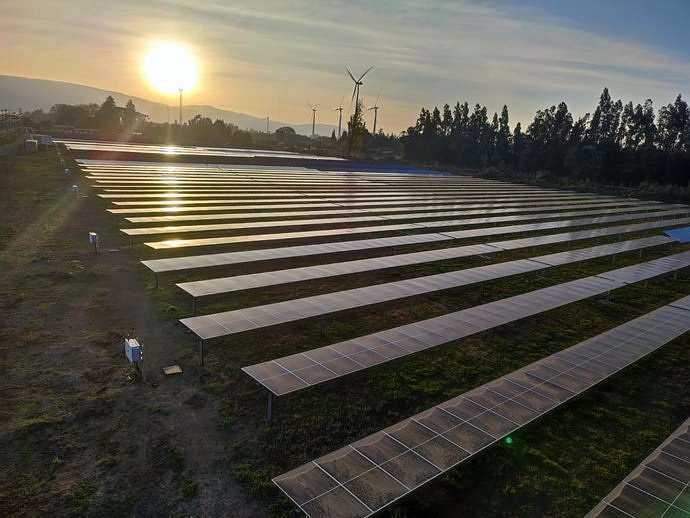Ask the Autonomous Communities for specific aid to cushion the "brutal impact" of the rise in costs and the losses due to the drought and the bee-eater
MADRID, 19 Sep. (EUROPA PRESS) -
The beekeeping sector of COAG estimates a reduction in the honey harvest between 40% and 50% due to the effects of the drought in Spain and the losses caused by the bee-eater, as reported by the agricultural organization, being the beekeepers of the Region of Murcia, Andalusia and the Valencian Community, the most affected by the lack of rain and flowering.
Specifically, the lower presence of insects due to the scarce flowering and the absence of ponds has turned honey bees into the main food of this migratory bird. In addition, flocks of bee-eaters go to hunt bees in nearby apiaries and their song frightens the bees, who stay inside the hives without leaving.
The agrarian organization has pointed out that this behavior is "dangerous" for the hives at the end of the summer, since the bees do not leave until the bee-eaters disappear, losing the best hours of foraging, which decreases the breeding and, therefore, decreases wintering population.
By autonomous communities, the losses in the apiaries of Andalusia, the Region of Murcia and the Valencian Community stand out, in which a reduction of over 50% of the honey harvest is estimated.
In Andalusia, orange blossom honey has remained in the province of Córdoba, but in Malaga it has been "mediocre", while thyme honey is uneven and chestnut honey has serious losses. In sunflower, the campaign can be described as good in the areas of the lower Guadalquivir, but quite bad in the Upper Guadalquivir.
Regarding Catalonia, the production is 15-20% compared to a normal year, due to having "many problems with the bee-eater" and in Castilla y León, the beekeepers who transhumanced to Extremadura and Portugal had a harvest of Acceptable spring honey, but oak honey has been disastrous as it also has serious problems with bee-eaters.
In Extremadura, pollen production is below 50% of a normal year. The beekeepers who came soon from Castilla y León were able to collect oak and holm oak honey but, afterwards, practically nothing.
While in Valencia, the campaign has been "disastrous", since the spring rains damaged rosemary and orange blossom and many swarms. Thus, it is estimated that rosemary has lost 90% and that of orange blossom is very scarce in the south of Valencia and in the north, a little more than half compared to the normal campaign, while thyme honey was lost by incessant heat.
Between January and June, Spanish operators acquired a total of 20,243 tons of honey (4,221 tons more than in the same semester of 2021). The level of honey purchases during this first half of the year was much higher than the first half of previous years, so never had so much honey been imported into Spain during the first half of the year as this year.
In this way, Spanish companies once again choose China and Portugal as the main honey supplying countries in 2022. During the first half of the year, they bought a total of 4,851 tons of honey from Chinese operators at an average price of 1.42 euros /kg and to Portuguese operators 3,642 tons at an average price of 2.08 euros/kg.
Faced with this scenario, COAG calls on the autonomous communities for specific aid for beekeepers that serves to cushion the "brutal impact" of the rise in costs in the activity and the significant losses due to the extreme drought and the incidence of the bee-eater.
The agrarian organization points out that this aid could be articulated through the regional Rural Development Programs, as the Government of Castilla La Mancha has already announced.

 Exploring Cardano: Inner Workings and Advantages of this Cryptocurrency
Exploring Cardano: Inner Workings and Advantages of this Cryptocurrency Seville.- Economy.- Innova.- STSA inaugurates its new painting and sealing hangar in San Pablo, for 18 million
Seville.- Economy.- Innova.- STSA inaugurates its new painting and sealing hangar in San Pablo, for 18 million Innova.- More than 300 volunteers join the Andalucía Compromiso Digital network in one month to facilitate access to ICT
Innova.- More than 300 volunteers join the Andalucía Compromiso Digital network in one month to facilitate access to ICT Innova.-AMP.- Ayesa acquires 51% of Sadiel, which will create new technological engineering products and expand markets
Innova.-AMP.- Ayesa acquires 51% of Sadiel, which will create new technological engineering products and expand markets The US Senate approves a law that will allow TikTok to be banned if it is not transferred to another company
The US Senate approves a law that will allow TikTok to be banned if it is not transferred to another company Guilarte believes that Reynders was "naive" when negotiating the CGPJ with PSOE and PP and regrets that there has been no "progress"
Guilarte believes that Reynders was "naive" when negotiating the CGPJ with PSOE and PP and regrets that there has been no "progress" The PP asks the Government to "imitate the transparency" of France to clarify the spying on Sánchez with Pegasus
The PP asks the Government to "imitate the transparency" of France to clarify the spying on Sánchez with Pegasus 90% of the largest charter schools in Spain charge "illegal" fees, according to an Esade report
90% of the largest charter schools in Spain charge "illegal" fees, according to an Esade report How Blockchain in being used to shape the future
How Blockchain in being used to shape the future Not just BTC and ETH: Here Are Some More Interesting Coins Worth Focusing on
Not just BTC and ETH: Here Are Some More Interesting Coins Worth Focusing on Looking for video games that value the neighborhoods of Valencia
Looking for video games that value the neighborhoods of Valencia UPV researchers improve the efficiency of air conditioning systems using a geothermal heat pump
UPV researchers improve the efficiency of air conditioning systems using a geothermal heat pump València is committed to citiverse and smart tourism to be "the reference technological hub of the Mediterranean"
València is committed to citiverse and smart tourism to be "the reference technological hub of the Mediterranean" Valencia displays its "innovative and technological potential" at the Emerge Americas event in Miami
Valencia displays its "innovative and technological potential" at the Emerge Americas event in Miami A million people demonstrate in France against Macron's pension reform
A million people demonstrate in France against Macron's pension reform Russia launches several missiles against "critical infrastructure" in the city of Zaporizhia
Russia launches several missiles against "critical infrastructure" in the city of Zaporizhia A "procession" remembers the dead of the Calabria shipwreck as bodies continue to wash up on the shore
A "procession" remembers the dead of the Calabria shipwreck as bodies continue to wash up on the shore Prison sentences handed down for three prominent Hong Kong pro-democracy activists
Prison sentences handed down for three prominent Hong Kong pro-democracy activists ETH continues to leave trading platforms, Ethereum balance on exchanges lowest in 3 years
ETH continues to leave trading platforms, Ethereum balance on exchanges lowest in 3 years Investors invest $450 million in Consensys, Ethereum incubator now valued at $7 billion
Investors invest $450 million in Consensys, Ethereum incubator now valued at $7 billion Alchemy Integrates Ethereum L2 Product Starknet to Enhance Web3 Scalability at a Price 100x Lower Than L1 Fees
Alchemy Integrates Ethereum L2 Product Starknet to Enhance Web3 Scalability at a Price 100x Lower Than L1 Fees Mining Report: Bitcoin's Electricity Consumption Declines by 25% in Q1 2022
Mining Report: Bitcoin's Electricity Consumption Declines by 25% in Q1 2022 Oil-to-Bitcoin Mining Firm Crusoe Energy Systems Raised $505 Million
Oil-to-Bitcoin Mining Firm Crusoe Energy Systems Raised $505 Million Microbt reveals the latest Bitcoin mining rigs -- Machines produce up to 126 TH/s with custom 5nm chip design
Microbt reveals the latest Bitcoin mining rigs -- Machines produce up to 126 TH/s with custom 5nm chip design Bitcoin's Mining Difficulty Hits a Lifetime High, With More Than 90% of BTC Supply Issued
Bitcoin's Mining Difficulty Hits a Lifetime High, With More Than 90% of BTC Supply Issued The Biggest Movers are Near, EOS, and RUNE during Friday's Selloff
The Biggest Movers are Near, EOS, and RUNE during Friday's Selloff Global Markets Spooked by a Hawkish Fed and Covid, Stocks and Crypto Gain After Musk Buys Twitter
Global Markets Spooked by a Hawkish Fed and Covid, Stocks and Crypto Gain After Musk Buys Twitter Bitso to offset carbon emissions from the Trading Platform's ERC20, ETH, and BTC Transactions
Bitso to offset carbon emissions from the Trading Platform's ERC20, ETH, and BTC Transactions Draftkings Announces 2022 College Hoops NFT Selection for March Madness
Draftkings Announces 2022 College Hoops NFT Selection for March Madness



























